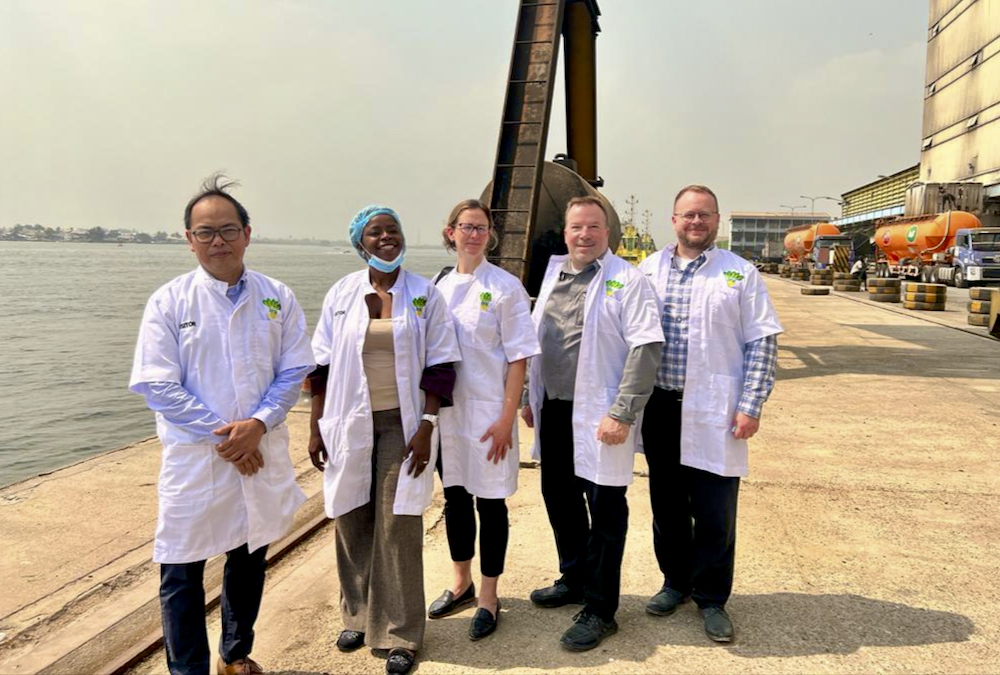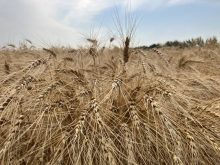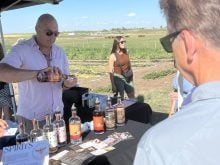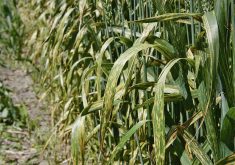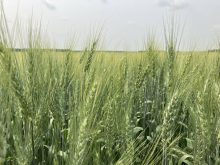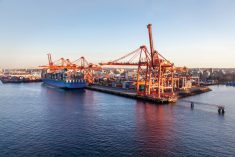“Glad to see you again — even more glad that you’ve got a full crop to sell this year.”
That was the theme of nearly every conversation that farmers and grain sector representatives on the New Crop Missions heard as they travelled for the first time since the pandemic began.
“I think the supply chain disruptions because of COVID-19 and the crisis in Ukraine have changed the tone of the conversations a lot,” said Dean Dias, CEO of Cereals Canada, which organizes the global marketing tours to Asia, Latin America, Europe, Africa and the Middle East.
Read Also

Milk concentration plant officially opens in Alta.
Canadian raw-milk processing history made with start up of Dairy Innovation West milk concentration plant in Alberta
“The conversations are becoming more around, ‘how do we make sure that Canadian farmers continue to grow the quality crop they have?’ and ‘Can we supply and be a consistent supplier?’”
Bentley producer Jason Lenz visited three countries on his tour (one of four that Cereals Canada put on this winter) and in every one he toured mills.
At every stop, either the owner or the boss showed up to welcome the Canadian visitors.
“According to the Cereals Canada people I was with, that doesn’t usually happen,” said Lenz, who went to Lagos, Nigeria, Dubai, United Arab Emirates and Singapore.
“It’s maybe the result of us not being there for a couple of years. To be able to talk to the actual owner or CEO of those mills, that hit home.”

Before the pandemic, the missions were strictly in-person affairs. In each county, the delegation (largely grain industry reps) give presentations on the quality and technical characteristics of crop harvested the previous fall. When the pandemic hit, grain officials here did what every other sector did — put on webinars.
“What we heard from our customers is that they like the webinar version to get the information sooner,” said Dias. “But what they really want is to have in-person meetings to talk about confidential information or some of the challenges they are having.
“They understand that we came off a tough year with the drought. I think the biggest thing to me is that the entire world is concerned about food security.”
Often the question was, ‘what do farmers need?’
Dias said grain buyers are worried about whether producers here have enough access to fertilizer and if wheat can be supplied to the marketplace in a timely fashion.
“They were not concerned about quality because quality is always there in Canadian wheat,” he said. “The concern was, ‘can I get that quality wheat to my market? And can they make sure that farmers in Canada continue to grow the high-quality wheat?’
“That was good for us to hear.”
Keep up production
Farmers continue to play a key role on the missions because buyers what to hear first-hand accounts of how Canadian wheat is grown and meet the people who plant and harvest it.
“The relationships — human to human — were really awesome,” said Jocelyn Velestuk, who runs a mixed farm with her family at Broadview, Sask. “Everyone was so happy overall to be with people in person.
“This is a global thing. Everyone is so thankful to be around people.”
Velestuk was the producer attached to the Asian mission, which went to Tokyo, Jakarta, Indonesia and Dhaka, Bangladesh before Christmas.

Once again, the ‘keep growing wheat’ message was repeatedly delivered.
“The one thing that kept coming up was, ‘we want to know that you’re OK about keeping up your production and keeping up the quality and even more quantity as possible,’” she said.
“They wanted to make sure we kept our seeded acres in wheat and want to make sure they are kept the same or increasing.”
Her delegation included an official with an export company, a staff person from the Canadian Grain Commission and a technical expert from Cereals Canada.
“My part as a farmer in those meetings was to go over what our growing season was like, and why we’re seeing the good quality that we are seeing this year, and the yields and whatnot,” said Velestuk.
“Everyone was concerned about food security and making sure we could keep supplying the wheat. There are a lot of different things happening in the world, so they wanted to make sure they keep production up and keep their mills and food production facilities running.”
The scale of milling operations in some countries is breathtaking, said Lenz.
“The biggest eye-opening experience for me was seeing how many tonnes of wheat is being ground into flour every day,” he said. “Nigerian flour millers, between all their mills, were doing 13,500 tonnes of wheat a day. That’s almost one of our full unit trains a day.”
In the three countries Lenz toured, Canadian Western Red Spring wheat was being blended.
“They were using our high-quality wheat to mix with lower quality wheat from Russia, Ukraine or the Baltic areas,” he said. “We had a really good story to tell in the New Crop Mission. The quality of our crop was one of the best we had for all different qualities of wheat.”
That’s good news for growers and exporters here. But superior quality comes with a higher price and that hits hard in a country like Nigeria, one of the most densely populated countries with one of the lowest per-capita incomes.
“This (higher prices) has affected some of the mills’ production in Nigeria in particular,” said Lenz. “They’ve shut down a third of their production because the common people in Nigeria can’t afford to buy bread or flour or noodles every day because of the cost.
“That’s not news you want to hear, that people can’t afford to buy food.”

The 2021 drought, which had a huge impact on Canadian supply, was also an oft-mentioned topic.
“They wanted to know what the Canadian industry was doing as a whole to avoid having such a big swing,” said Lenz.
His response is that the Canadian grain sector is building resiliency into wheat through plant genetics and breeding for drought tolerance and disease resistance. Both Velestuk and Lenz spoke about no-till practices, soil health and technology.
“I felt very grateful for the chance to get an ‘outsider looking in’ view of our agriculture industry and how other people look at it,” said Velestuk. “It’s nice to know more about where it goes and how it gets there and who is eating our product and who our consumers are.
“I was extremely proud to be a Canadian wheat farmer because we get some really great reviews for what we produce.”


